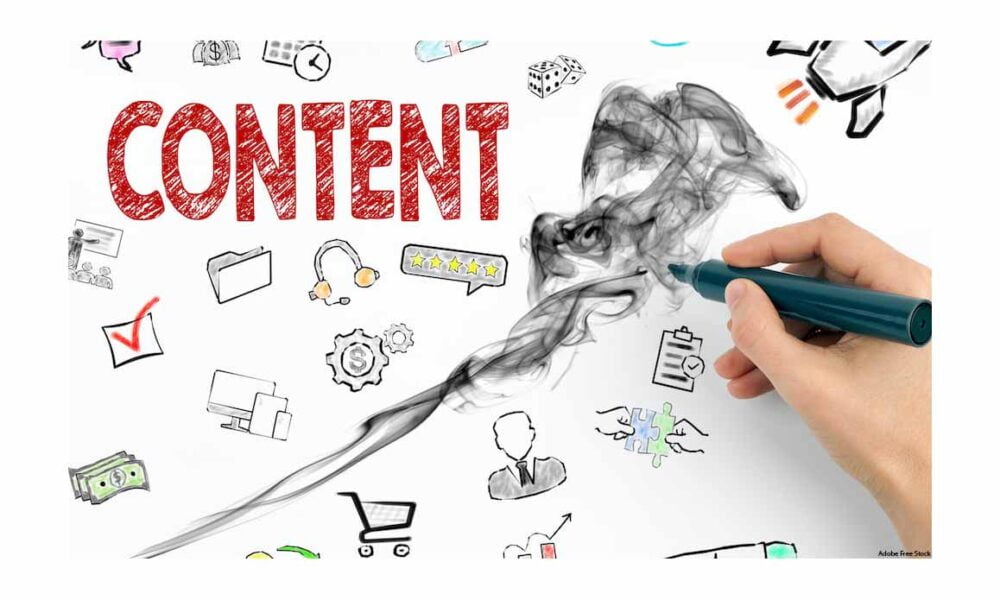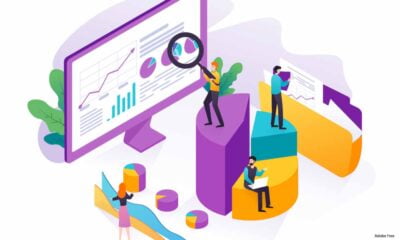Content Marketing
How Using A CRM Can Optimize Your Content Marketing

CRM tools have many features most users don’t know exist, let alone use. In fact, most software has many more features than most users typically use. Liken the uptake to Pareto’s 80/20 rule where only 20% of the features are used. Imagine the lost opportunities when your marketing team are using so few features!
This article looks at CRMs and how using more features helps optimize your content and digital marketing.
What is CRM? What does it do?
CRM stands for Customer Relationship Management, and it’s used to nurture consumer interactions and drive business success. Specifically, it helps you do the following:
- Identify profitable sales opportunities
- Store relevant prospect and buyer information
- Document service problems
- Oversee marketing campaigns, etc.
A CRM helps you harmonize your management tasks for sales, marketing, and customer relationships, so what are some of its features?
CRM features include:
- Contacts, leads, tasks and campaign management
- Sales data and analytics
- Dashboards and report generation
- Sales forecasting
- Marketing automation
- Content database
- Image repository library
- Mobile CRM, and more
Are you using all these features? Plus, there are more tailored features in the industry-specific CRMs.
Industry-specific CRM
For example, there are automotive industry CRMs customized to meet dealerships’ unique lead management needs.
Other industries also have customized CRMs, including:
- Healthcare
- Manufacturing
- eCommerce
- Legal
- Accounting
- Real Estate and more
So the next question is – how can you use your CRM to optimize your content marketing campaigns?
Optimizing Your Content Marketing
Let’s have a look at what to do with a CRM to improve your content marketing success.
1. Refined Buyer Personas To Target
Capture, store and organize customer information, i.e. buyer personas within your CRM.
Using the data captured in the CRM, you can uncover insights on your customers through their actions and journeys. With this intel, you can create relevant content for your marketing campaigns that target specific customer demographics, i.e. your target audience.
For example:
How an automotive CRM connected to a car dealership’s blog can empower marketers.
- Site visitors read a particular blog post before visiting the 2021 Honda CR-V product page, requesting information or making a purchase!
- The automotive CRM confirmed the blog post had content on the five best cars for young professionals
- The CRM also confirmed the inquires and buyers of 2021 Honda CR-V were mostly in their late 20s
Conclusion: No marketer hungry for insights will ignore information that tells them how to craft content for specific customer demographics.
Refining your buyer persona is essential for doing less work with more resources. Analysis helps marketers create topics and content that truly appeals to targeted audiences.
2. Customer Segmentation
CRM tools also help you sort your customers according to their demographics, interests, jobs, company sizes, industry, etc. Customer segmentation can also include pages on your site that customers visited and show their engagement. Engagement varies, and it’s a big topic; however you can set up and view metrics from time spent on site, the content viewed and conversions (sales).
Customer segments can go further, too, assisting with your marketing content and their publication schedules.
For example:
A law firm uses a CRM to monitor its online client activities on its website.
The CRM reveals visitors of various ages watching specific videos at different times as well.
The legal office can categorize these visitors into, e.g.:
- 40-year-old couples viewing divorce-related video materials on late weeknights
- Aged 30-something professionals watching overviews on managing workplace conflict during weekday lunch breaks
- Middle-class residents consuming videos about land disputes every Sunday afternoon, etc.
With this hyper-specific information, the law firm can easily determine the best content to create for which audience group on which days and times. This is advantageous, especially if you have a diverse clientele and suite of service offers.
3. The Customer Journey
Not all website visitors immediately convert and buy your products and services. Some take time, but every consumer typically goes through a series of phases in their interaction with a business.
Marketers call this the customer journey, which usually has the awareness, consideration, and purchase (or decision) stages.
A CRM tool helps you determine and track your customers’ progress by extracting updated data from several sources and organizing prospects accordingly.
Knowing prospects’ specific stages of their journey is crucial since each stage requires a unique set of marketing tactics to get their buy-in. This intel helps you develop relevant, targeted messages that resonate with your intended audience for your content marketing campaigns.
For example:
How an eCommerce retail shop sells herb-infused beverages.
The CRM reports reveal how long it takes for a customer to purchase by measuring site activities. For example, the site visitor may read several blog posts, repeatedly visit the product page, and put items in carts — but later abandon the cart.
The eCommerce retail shop can review the website content and sales strategy and conclude why the cart abandonment was how the invitation to buy was presented within the blog posts content. The blog topics were likely to be niche and relevant to site visitors who already know the product.
For the visitors that need more steps in the buying process, e.g.choosing the best flavor for their nutritional needs or understanding garment sizing before adding a shirt to the cart, revise the content and sales process to include the extra step.
Plus, remember to match your content appropriately with the stages of progress, including:
- Awareness: blog and social media posts, educational webinars, checklists, whitepapers, kits, tools, tip sheets, ebooks, how-to videos
- Consideration: free sample, case study, product comparison guide
- Decision: coupons, live demo, free trial, consultation offers
4. Repackaging High-Performing Content
CRM reports will present data on the content and campaigns that yield optimal results. Leverage all insights when planning your content and reuse or repackage the material to engage your intended audience.
Probe into your best-performing content according to the CRM insights. Check its compelling elements and apply the same for your next content pieces. Creating templates will be great when reusing the content.
You can also repackage it in other forms. For instance, you can turn a case study into videos, infographics, webinars, blog posts, etc.
Final Thoughts
You can get a lot more from a CRM than just a data repository. Information is power, and in this blog post, we highlighted how using more features of your CRM can help you make your content marketing work harder for your business.









